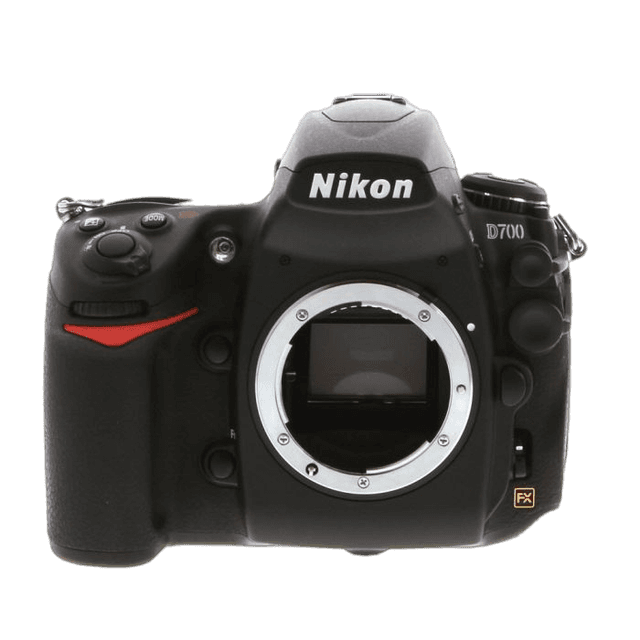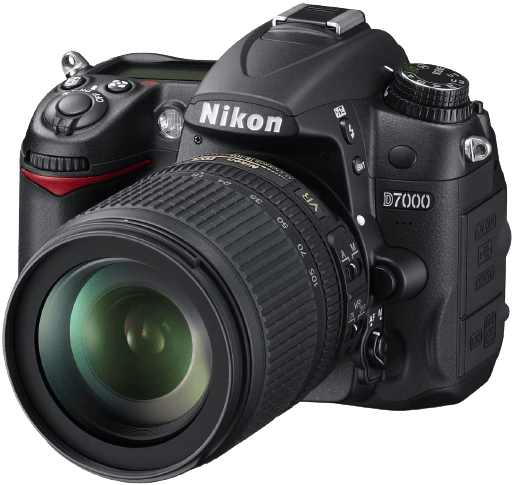Nikon D700 vs D7000 Comparison
Nikon D700

Nikon D7000

The Nikon D7000 edges out the Nikon D700 with a score of 56/100 compared to 53/100. Both cameras are DSLRs and were released in 2008 and 2010, respectively. They share similarities in design and functionality, but there are key differences that set them apart.
The Nikon D7000 is a more compact and lighter camera, measuring 132 x 105 x 77mm and weighing 780g, making it more portable than the Nikon D700, which measures 147 x 123 x 77mm and weighs 1074g.
On the other hand, the Nikon D700 does not have any major advantages over the D7000. The only slight edge is its slightly higher camera weight, which might provide more stability during shooting.
Taking these factors into account, the Nikon D7000 is the better option due to its lighter weight, compact size, and lower launch price. The Nikon D700, while a decent camera, does not offer any significant advantages over its counterpart.
Nikon D700 vs D7000 Overview and Optics
The Nikon D7000 narrowly wins in optics with a score of 55/100, compared to the Nikon D700’s score of 54/100. Both cameras share several specifications, such as a CMOS sensor, Nikon F lens mount, and lack of image stabilization. Additionally, both cameras have the same DXOMARK score of 80 for their sensors.
The Nikon D7000’s advantages lie in its higher megapixel count of 16.2 and its more advanced Expeed 2 processor. The increased megapixels allow for larger prints and more detailed images. The Expeed 2 processor enhances the camera’s performance in areas such as image quality, autofocus, and noise reduction.
On the other hand, the Nikon D700 has a faster shooting speed of 8 frames per second, compared to the D7000’s 6 frames per second. This makes the D700 better suited for capturing fast-moving subjects, such as sports and wildlife photography. Additionally, the D700 has a full-frame sensor, which provides better low-light performance and a shallower depth of field compared to the D7000’s APS-C sensor.
While the Nikon D7000 has a slight edge in optics, the D700’s faster shooting speed and full-frame sensor give it advantages in specific photography situations. The choice between these two cameras ultimately depends on the individual’s needs and preferences in terms of image quality, performance, and shooting scenarios.
Nikon D700 vs D7000 Video Performance
When comparing the Nikon D700 and the Nikon D7000, it is important to note that the Nikon D700 does not have video functionality. This means that if video recording is a priority for you, the Nikon D7000 is the camera to consider.
The Nikon D7000 has a video score of 57 out of 100, which may not be the highest score but still offers decent video capabilities. The camera can record in Full HD with a maximum resolution of 1920 x 1080, providing clear and detailed footage. The maximum video frame rate is 24fps, which is suitable for most casual recording purposes. Additionally, the Nikon D7000 has built-in time-lapse functionality, allowing you to create captivating time-lapse videos with ease.
Taking into account the video capabilities of both cameras, it is clear that the Nikon D7000 is the better choice for those who require video recording features. The Nikon D700, lacking video functionality, may still be a suitable option for those solely focused on photography. Ultimately, the choice between these two cameras will depend on your specific needs and priorities.
Nikon D700 vs D7000 Features and Benefits
The Nikon D700 and Nikon D7000 both have a feature score of 54/100, indicating that they share similar capabilities in terms of features. Both cameras have a 3-inch screen, with the D700 having a slightly higher screen resolution at 922,000 dots compared to the D7000’s 921,000 dots. Neither camera has a touchscreen, flip screen, GPS, or Bluetooth. However, both cameras do have WIFI connectivity.
Despite having the same feature score, the Nikon D700 has a few advantages over the D7000. Its slightly higher screen resolution provides a marginally clearer and sharper display for users. This difference may not be significant, but it can still contribute to a better user experience when reviewing images or navigating through the camera’s settings.
On the other hand, the Nikon D7000 does not have any specific advantages over the D700 in terms of features. Both cameras share the same set of features, with the D700 having a minor advantage in screen resolution. This means that the D7000 does not offer any additional benefits to users compared to the D700.
Given the similarities in their feature sets, neither camera has a clear advantage over the other. Both the Nikon D700 and D7000 provide a similar user experience and offer the same set of features, with the D700 having a slight edge in screen resolution. Users may choose between these two cameras based on other factors such as price, availability, or personal preference.
Nikon D700 vs D7000 Storage and Battery
The Nikon D7000 wins in the storage and battery category with a score of 79/100, while the Nikon D700 scores 43/100. Both cameras have one memory card slot and lack USB charging capabilities. However, there are differences in their memory card compatibility and battery life.
The D7000 accepts two SD, SDHC, and SDXC memory cards, providing more flexibility in storage options. On the other hand, the D700 only accepts Compact Flash (Type I) cards. The D7000 also has a slightly longer battery life, offering 1050 shots per charge compared to the D700’s 1000 shots. The D7000 uses the EN-EL15 battery, while the D700 relies on the EN-EL3e battery.
Although the differences are small, the D7000 has a slight edge in storage and battery performance. This advantage may be important for photographers who require more storage options and longer battery life. However, the D700’s performance is still respectable and may be sufficient for many users.
Nikon D700 vs D7000 – Our Verdict
Are you still undecided about which camera is right for you? Have a look at these popular comparisons that feature the Nikon D700 or the Nikon D7000:
